A sweet and spicy dish of pork coated and stir-fried in gochujang sauce, perfect for Korean barbecue!
If you enjoyed my caramel pork, you’ll love the recipe I’m sharing today: Jeyuk Bokkeum.
Let’s head to Korea and its culinary treasures with a dish that offers sweet notes yet certainly doesn’t lack character…
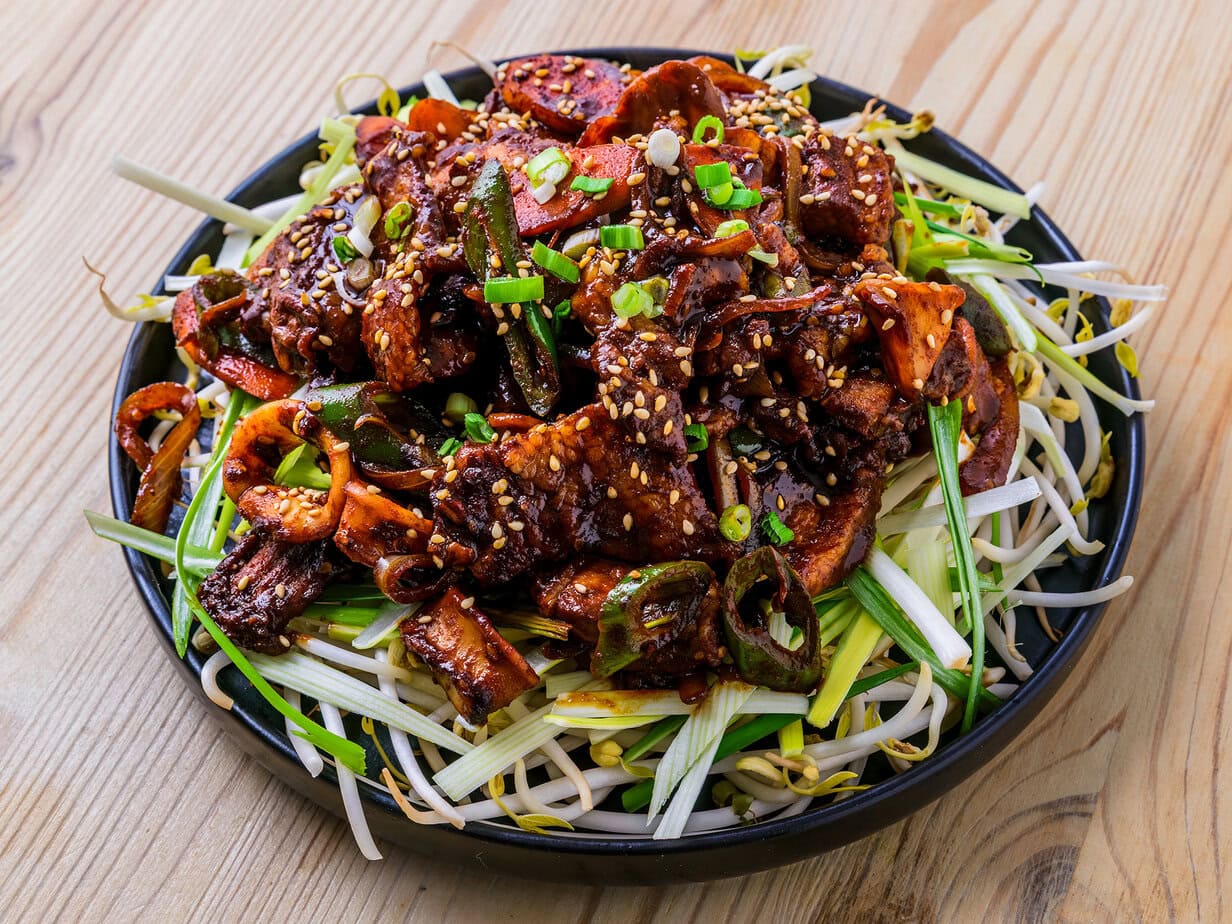
What is Jeyuk Bokkeum?
We have already discussed how Korean barbecue differs from what we usually call barbecue at home… Well, Jeyuk Bokkeum is among the very best dishes served at a Korean barbecue.
Some of these dishes may already be familiar: Bulgogi, samgyeopsal, Bibimbap, Tteokbokki, or Kimchi… and let’s not forget the many banchan that accompany them
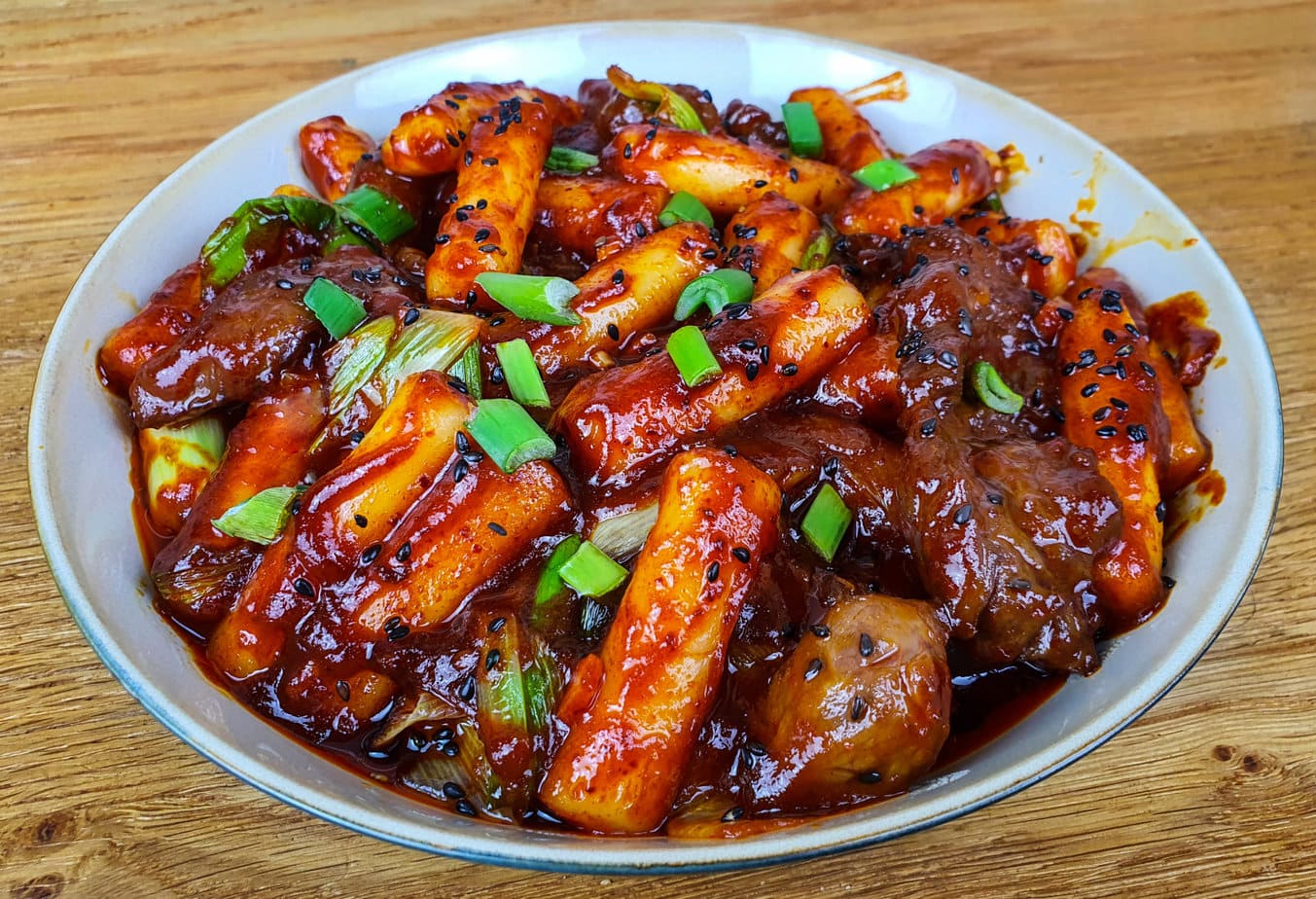
Now it is Jeyuk Bokkeum’s turn. But what exactly is it? In short, Jeyuk (제육볶음), also called dweji bulgogi (돼지불고기), is spicy marinated pork.
It consists of thinly sliced pieces of pork shoulder or belly, stir-fried in a sweet gochujang sauce enhanced with gochugaru. Korean cuisine is known for its bold balance of sweet, salty, spicy, and umami flavors; this dish is proof.
Consider this fair warning for battle-hardened palates. If your taste buds are on the sensitive side, you might want to sit this one out!
Where does Jeyuk Bokkeum come from?
Jeyuk Bokkeum is said to come from South Korea’s Gyeongsang region, though its exact date of origin remains unclear.
Legend has it that a small restaurant in Seoul regained popularity in the mid-80s after adding it to the menu.
That success did not stay within Korea: Jeyuk Bokkeum has since gained fans worldwide.
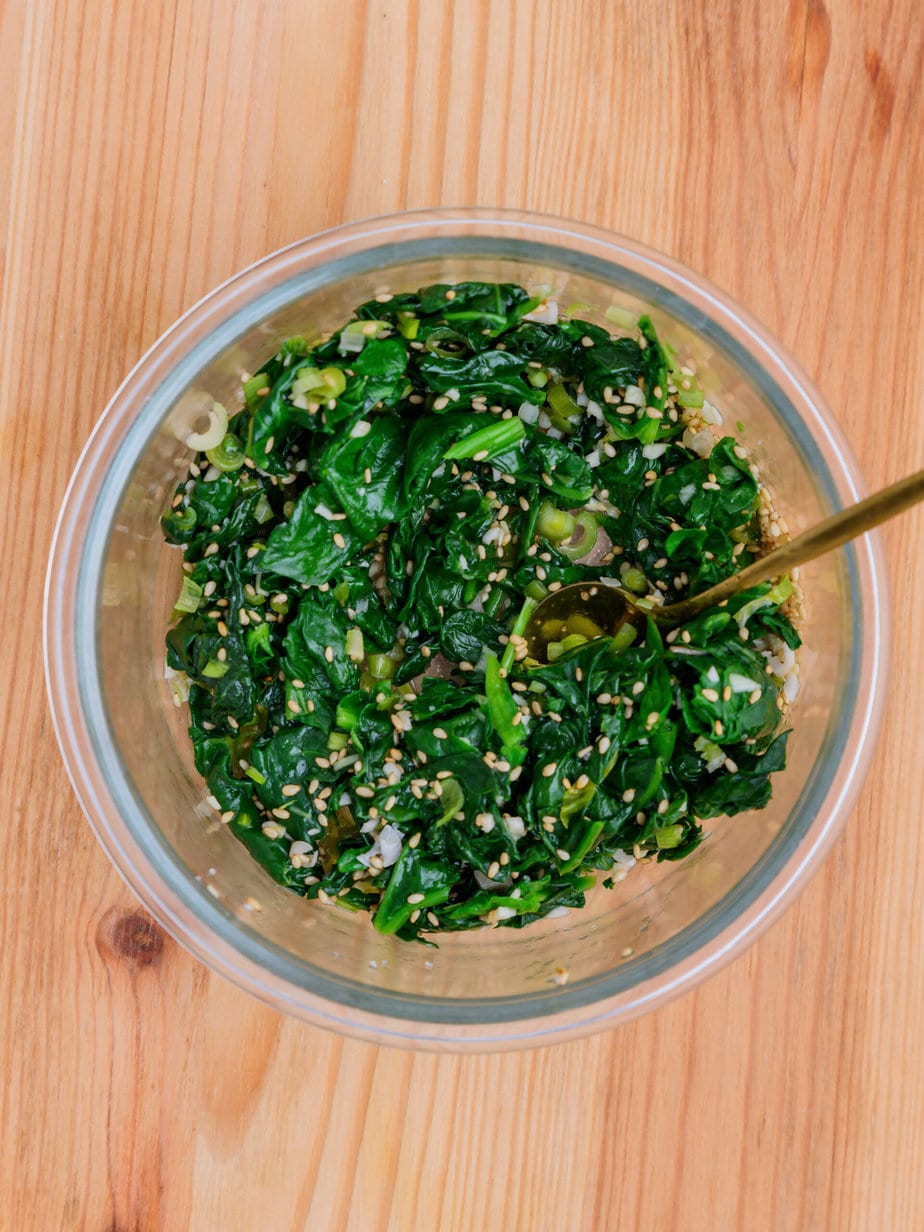
By the way, if you struggle to pronounce the name, it has a very clear meaning in Korean. The word “jeyuk” means “pork,” while “bokkeum” means “stir-fried.” Could not be clearer.
In Korean barbecue restaurants, it is typically served on a hot plate with white rice or in lettuce wraps.
The main ingredients of Jeyuk Bokkeum
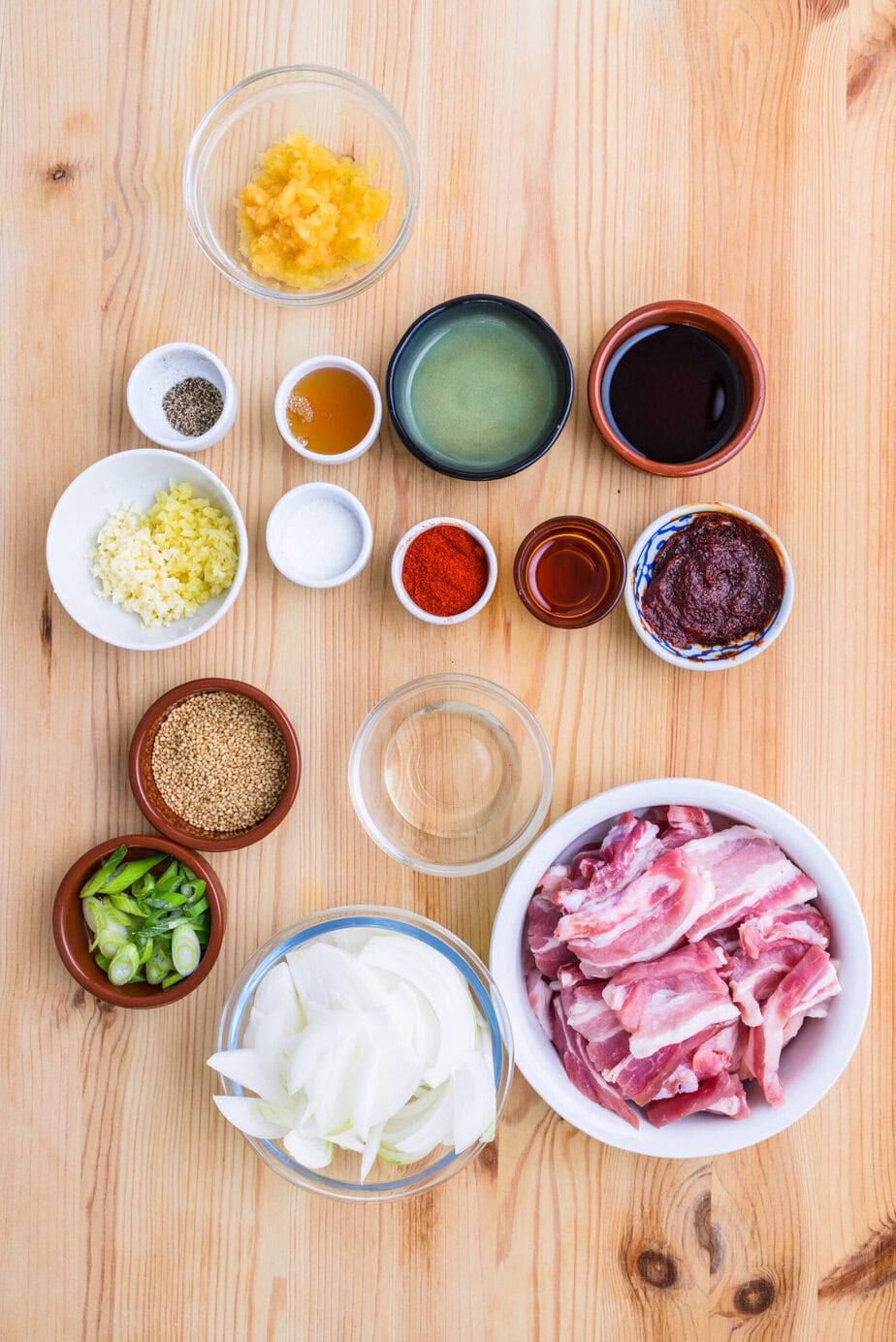
Pork: While pork shoulder is sometimes used, I prefer pork belly. This tender cut becomes especially juicy after marinating.
Sesame seeds: Used alongside spring onion as a garnish, they are the finishing touch. Together they add crunch, the nutty flavor of sesame, and a burst of freshness. If you love spring onion, try my scallion oil.
Gochugaru: If you are a fan of Korean cooking, this should sound familiar. You will also find it in the Yachaejeon and kimchi. It is a chili powder that ranges from mild to hot, but it never burns too fiercely!
Gochujang: This is the second cornerstone of Korean cuisine. Gochujang is the fermented paste made from gochugaru, and together they are an unbeatable pair – a real game-changer!
Light soy sauce: Although the marinade already contains honey, sugar, sesame oil, and mirin, light soy sauce brings the necessary salty balance.
Mirin: Mirin adds sweetness to the marinade. You could say it is similar in taste to sake, but sweeter. Mirin caramelizes and lacquers whatever it touches, especially meat, as in Yakitori skewers.
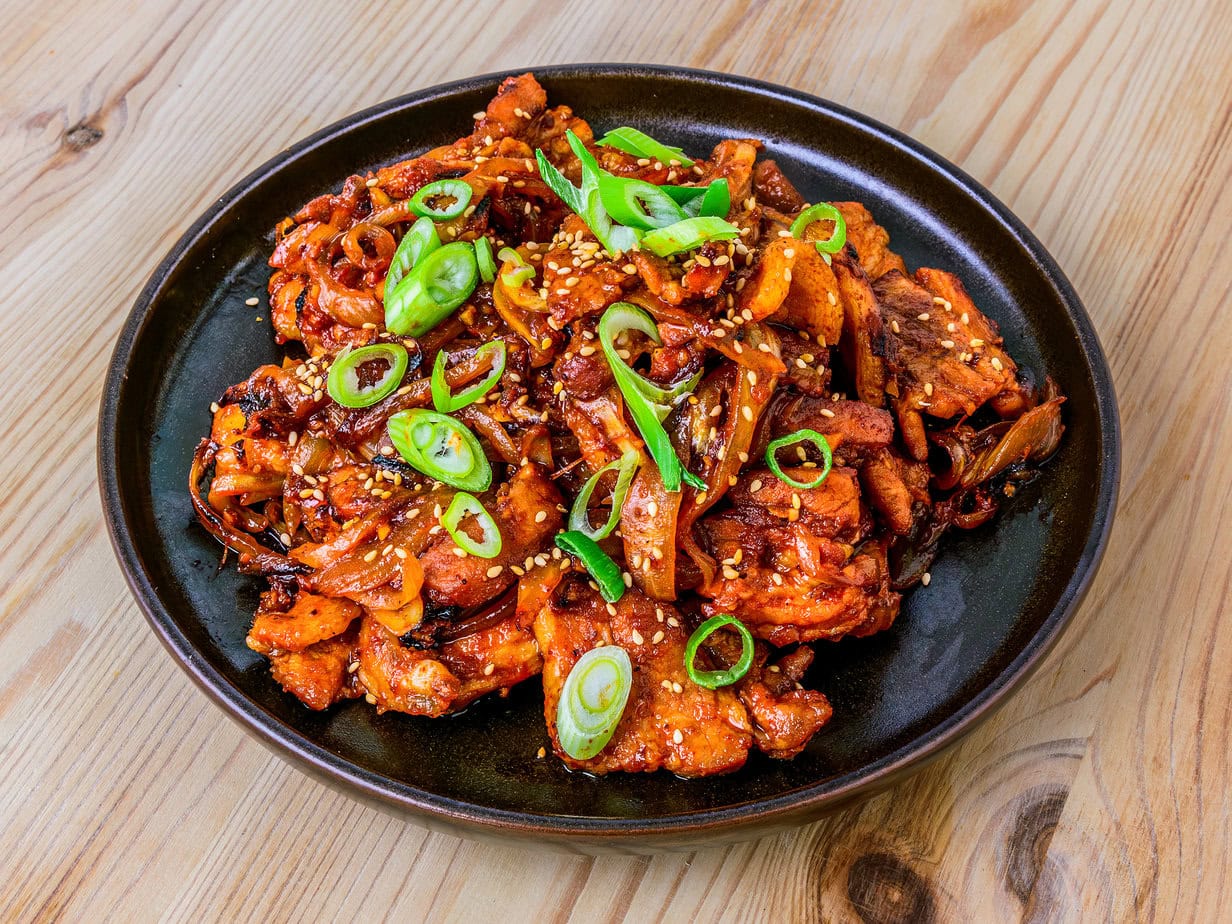
Jeyuk Bokkeum – Spicy Pork Bulgogi
Ingredients
- 450 g pork belly very thinly sliced
- 1 onion thinly sliced
- neutral oil for stir-frying
- 1 green onion thinly sliced, for garnish
- white sesame seeds for garnish
Marinade
- 2 tablespoons gochugaru Korean red-pepper powder
- 1 tablespoon gochujang Korean red-chili paste
- 2 tablespoons light soy sauce
- 1 tablespoon mirin
- 1 teaspoon sesame oil
- 1 tablespoon honey
- 1 tablespoon sugar
- 3 cloves garlic minced
- 1 teaspoon ginger minced
- 1 pinch black pepper
- 2 tablespoons water
- 30 g apple grated
Instructions
- Mix all the marinade ingredients in a large bowl.2 tablespoons gochugaru, 1 tablespoon gochujang, 2 tablespoons light soy sauce, 1 tablespoon mirin, 1 teaspoon sesame oil, 1 tablespoon honey, 1 tablespoon sugar, 3 cloves garlic, 1 teaspoon ginger, 2 tablespoons water, 30 g apple, 1 pinch black pepper

- Add the pork belly and onion, then toss until everything is evenly coated.450 g pork belly, 1 onion

- Cover and marinate for at least 2 hours or overnight.
- Heat a wok over medium-high heat and add the oil.neutral oil
- Stir-fry the pork mixture until the meat is cooked through and lightly caramelised.
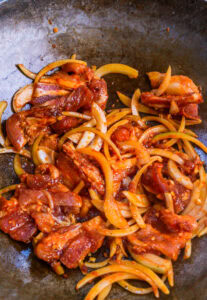
- Garnish with green onion and sesame seeds, then serve immediately.1 green onion, white sesame seeds
